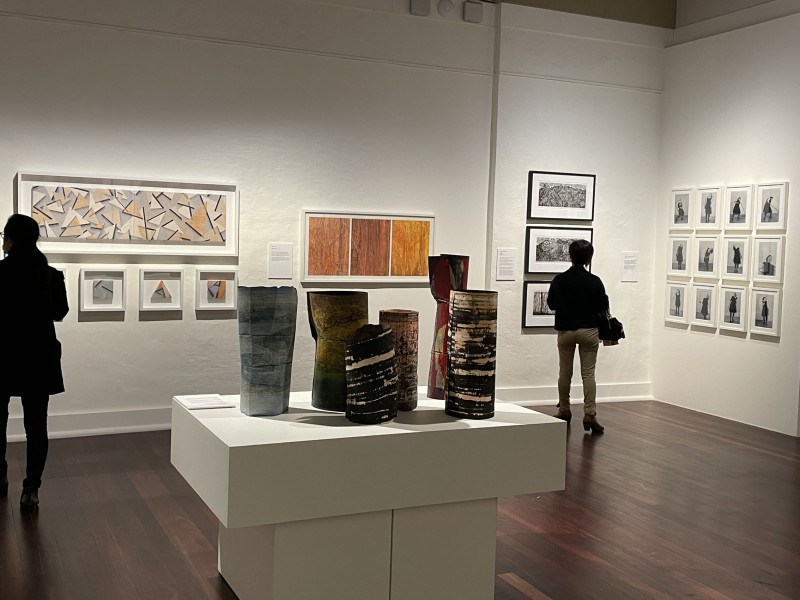Roz Kean has fixed a couple of omissions/errors in her video. Here is the finished video.
To the Edges @ Manly Art Gallery and Museum

Only six days to go to see this impressive exhibition!
Splash page image: Nathalie Hartog-Gautier, Looking for Paradise, Handmade raw cotton paper in collaboration with Darren Simpson from Creative Paper Tasmania and Penelope Lee, 12 books, unique state.
The Exhibitions Page is Now Ready to View.
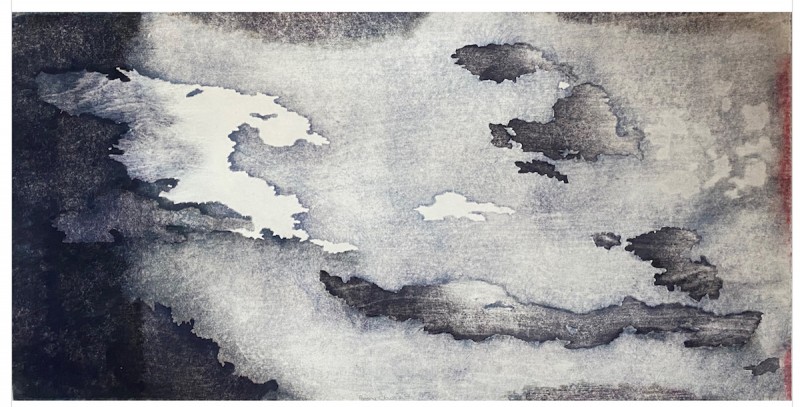
The exhibitions page has links to a short Film of the installed work, the online catalogue, and Sasha Grishin’s Opening Address.
Go Here.
Artists in Conversation with the Exhibition Curator, Katherine Roberts, Manly Art Gallery and Museum: Joanne Gwatkin Williams
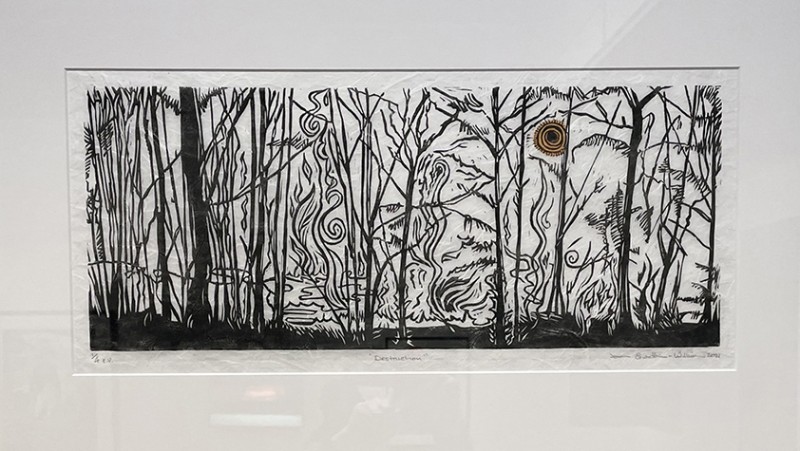
How does your work address the theme ‘To the Edges’?
For myself, this has been a very apposite theme for a number of reasons. The initial reason being direct experience of the bush fires in 2019/2020. I live on a hundred acres in remote NSW South Coast and watched the sky turn a livid brown and the sun turn an angry orange as the flames from the Currowan Fires crept closer, until we were surrounded and parts of our land a-flame. Myself, husband, dog, were literally ‘on edge’ for days and nights with fire hoses out, water pumps on and waking every couple of hours through the night to check that fallen and smoking trees had not re-ignited and started a fresh fire. So the first piece in the trio deals with this aspect of the theme.
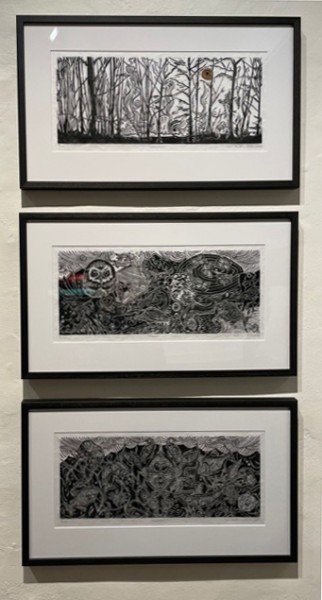
The second piece ‘Chaos’ suggests that humanity’s greed, carelessness and poor behaviour has lead to chaos and disaster – a theme influenced by Mario Vargas Llosa’s book ‘The Storyteller’ – and here we see flood, fire, calamity inflicted on the world. Finally, man’s poor environmental record has brought man and planet to the edge of extinction – sea levels have risen and imagined, monstrous sea creatures dominate …
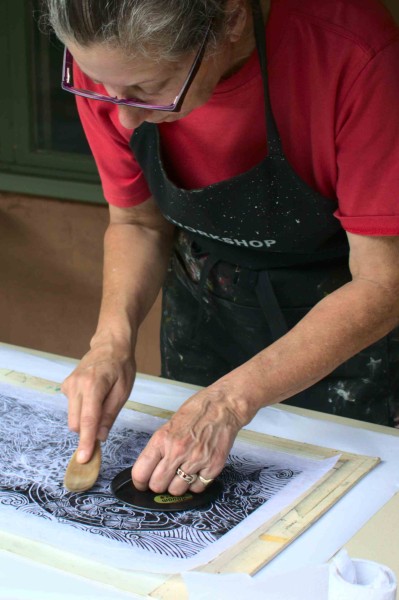
Can you describe the technical process you went through to achieve the finished work and what technical challenges you encountered along the way?
Technically, the pieces were reasonably straight-forward, any difficulties tended to be in cutting the detail and ensuring clarity. Perhaps my choice of fibrous Japanese Unryu paper – chosen because I felt the woody fibres would enhance the message of the pieces – did make it harder to get solid blacks where I really needed them and as a result I did end up printing them all by hand.
What do you see as the role of Sydney Printmakers for the next 60 years?
Like other successful printmaking groups, we can show the great expressive possibilities of our craft, the wonderful images that can be achieved using only print techniques; that printmaking skills are great tools for everyone to use either alone or in combination with other media.
How do you see the role of printmaking in general, contributing to the conversation about contemporary art practice.
Printmaking utilises numerous flexible and dynamic tools and can probably lead or assist art practice to move in a multitude of directions.
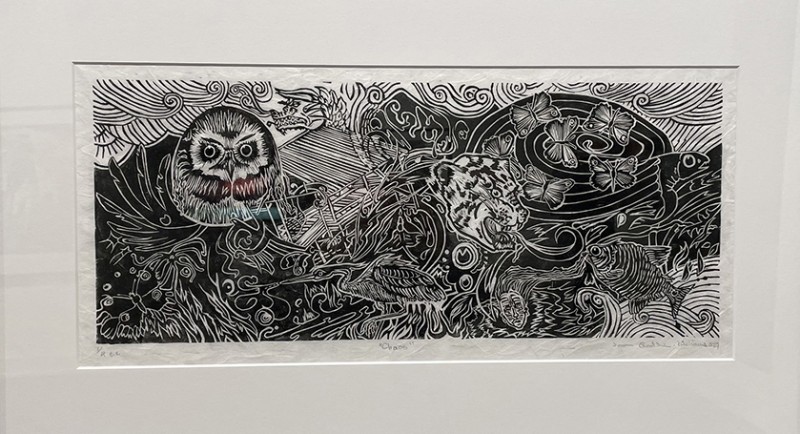
Exhibition Walk Through, To the Edges: 60 years of Sydney Printmakers, with curator Katherine Roberts of Manly Art Gallery and Museum.
To the Edges is open for visitors again, but if you just can’t make it, here is a video walk through of the show hosted by the curator, Katherine Roberts. The exhibition closes on the 7th of November.
Thanks to Nathan Lewis and Matt Creswell for making the video.
Great news: To the Edges @ Manly Gallery is opening again!

Sydney Printmakers 60th Anniversary Exhibition is opening again for three weeks from Tuesday 12th October to Sunday 7th November. The work has been sitting quietly on the walls for months but now we have another chance to see it.
There may be limits on how many people can enter the gallery at the same time, but its very exciting that we will have another opportunity to visit. Many of us did not get there the first time.
Get your friends together and go and have a look…….Its an excellent show.
Artists in Conversation with the exhibition curator, Katherine Roberts, Manly Art Gallery and Museum: Angus Fisher
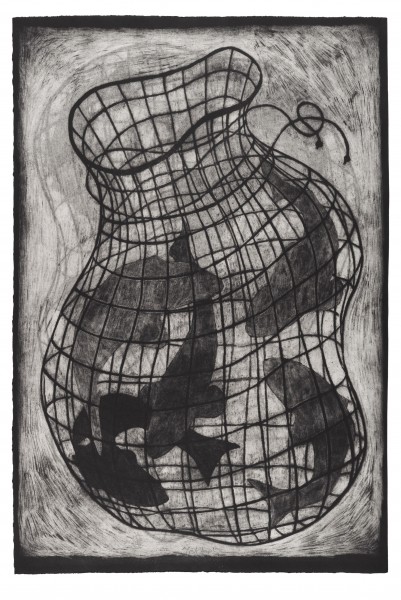
How does your work address the theme ‘to the edges’?
The work is representational but is made reductively, focusing on the shapes, spaces and atmosphere connecting the subjects. The edges are only created through a removal of what’s between. Broadly, the print explores how we interconnect with our surroundings and the veil that exists between what we perceive as ‘natural’ and ‘unnatural’. At a time where the world is on the edge of a precipice, an awareness of this divide, leading to a more holistic vision of ‘nature’ is perhaps our only salvation.
Can you describe the technical process you went through to achieve the finished work and what technical challenges you encountered along the way?
Recently I’ve made a few works burnishing aquatints and working reductively. I heavily darken the entirety of my plates with an aquatint then work back into them with scrapers and burnishers smoothing the surface texture of the plate like a traditional mezzotint. Previously I’ve taken care with the technique and aimed to achieve a softness a finesse but for this image I worked quickly using only large scraping tools hoping to achieve a sense of physicality and movement in the final marks and a sense of tactility in the removed areas of the plate.

What do you see as the role of Sydney Printmakers for the next 60 years?
Sydney printmakers has an important role bringing together printmakers and continuing to provide opportunity for connection and discussion amongst members and the printmaking community. The organisation provides a distinguished platform for printmakers to present themselves as a united front and grants access to unique and exciting exhibiting possibilities. The role of the Sydney Printmakers in disseminating printmaking into the public sphere continues to be of vital importance.
How do you see the role of printmaking, in general, contributing to the conversation about contemporary art practice?
Printmaking is an art practice inherently linked to technologies. From the most primitive forms of mark making to the utilisation of cutting edge technology, under its skin printmaking is a rolling commentary on the progression of how we communicate and how we make marks on each other. The role of printmaking in contemporary art practice is strong and I believe it really can only get stronger as it’s horizons widen and it’s playing field naturally becomes larger.
Artists in Conversation with the Exhibition Curator, Katherine Roberts, Manly Art Gallery and Museum: Rafael Butron
Continuing with our series of interviews with artists exhibiting in Sydney Printmakers ‘To the Edges’ at Manly Art Gallery and Museum, we now talk to Rafael Butron.
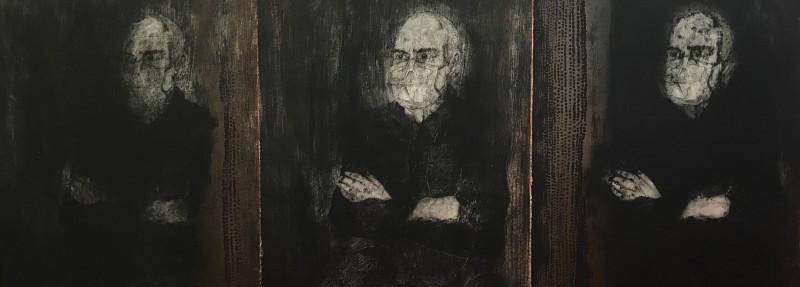
How does your work address the theme ‘To the Edges’?
Recent unparalleled events Have caused many to live on the edge. The pandemic virus, caused by transmission from one person to another forced many of us into isolation quite rapidly, and for most people came fear and loneliness. Humans caused these events to unfold. The world’s temperature rises and our environment has been thrown. ‘Phases of Isolation‘ is a self portrait that explores three stages of separation, frustration, anxiety and depression. As we value our lives so should we also value the world we live in, by having compassion for one another and a duty of care for our world.
Can you describe the technical process you went through to achieve the finished work and what technical challenges you encountered along the way?
I usually engrave from a drawing on the plate itself using copperplate with a marker pen, then slowly engrave using an engraving tool called a Burin. The technical challenge is to remove all your training, which tends to make the print perfectly executed and use the innate artistic energy to achieve an image, much like action painting. My intention is to incorporate traditional printmaking techniques to create a unique work that has its own spirit.
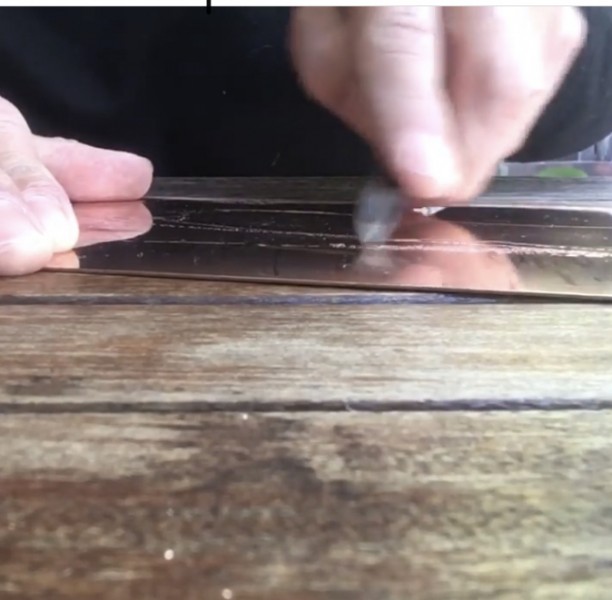
What do you see as the role of Sydney Printmakers for the next 60 years?
Sydney Printmakers have and always will push printmaking to its limits and with every new member there is an opportunity to develop new engaging works that add to the diversity of the group and ensure its longevity for years to come.
How do you see the role of printmaking, in general, contributing to the conversation about contemporary art practice?
Printmaking has a role to play in contemporary art making as every printmaker has a unique approach to the creation of an image and the variety of mediums allows for an individual interpretation of the subject.
Artists in Conversation with the Exhibition Curator, Katherine Roberts, Manly Art Gallery and Museum: Carmen Ky.

How does your work address the theme ‘to the edges’?
Consisting of six connecting panels, each one complete also in its own right, this work is thematically concerned with edges. Titled Rainforest Meets the Sea connects my current environment: a narrow coastal strip at the edge of the Royal National Park, nestled under the Illawarra Escarpment to the South Coast of NSW. My home and studio adjoin remains of subtropical rainforest with a short walk to the ocean. Here the edges of the land meet the sea, feeding into the concept of To the Edges.
Always living next to large bodies of water and in bushland, I inhabit and respond to natural elemental environments. The ambience of the natural elements reaffirms my research into the philosophy of the Five Elements as interpreted in Tibetan Buddhism and takes my work to the edges of Eastern philosophy and Western art. This was further explored in my Master of Philosophy degree completed at ANU in 2020.
Can you describe the technical process you went through to achieve the finished work and what technical challenges you encountered along the way?
For this project I pushed my printmaking to the edges of becoming a painting by including a few of the mediums that I employ when painting: watercolour, collage and encaustic wax. Starting with washes of watercolour, I then printed collograph shapes reminiscent of sea weeds or tree trunks, next I tore my etchings into evocative shapes suggestive of deep-sea creatures or rainforest forms and collaged them into the work. This was followed by painting a series of white spheres and ovals to add connecting sparks of light in each panel.
I love using encaustic wax when painting, however a challenge in applying it to paper is that it becomes partly absorbed while using a heat gun to spread the wax and thus changes the tone of the paper. Firstly, I stabilized the paper by gluing it to well-sealed boards and defined the shapes that I wanted to remain white by applying white paint to those areas. eg: the white spheres. This incurs another small challenge: painting white on white paper, makes it hard to evaluate the spatial depth of the work … until the wax is burned in. The whole process is labour intensive and the encaustic wax is toxic, so it involves wearing a protective mask. However, the resulting smooth protective coating produces a beautiful luminous quality to the work.
What do you see as the role of Sydney Printmakers for the next 60 years?
I see the Sydney Printmakers continuing as a platform for members to exhibit and embracing new members and methods of print and supporting change.
How do you see the role of printmaking, in general, contributing to the conversation about contemporary art practice?
Printmaking will always be a part of contemporary art practice as an embedded tradition constantly changing to accommodate new approaches and media.
Artists in Conversation with the Exhibition Curator, Katherine Roberts, Manly Art Gallery and Museum: Roslyn Kean.

How does your work address the theme “To the Edges“?
2020-21 has been a time full of challenges and during periods of isolation there is time to reflect and consider what is of importance. The varying dynamics of dealing with a new “ Covid 19 “ society has inspired this image. Shifting values, tough decisions and being on edge of so many changes. To be so mindful of what was once just everyday living.
Which way to turn, when to touch, not being allowed to touch & show affection all create a vision of shifting planes and turning points.
Aristotle created a triangle of rhetoric, a way to discuss Ethos – ethical issues, Pathos – compassion and emotion, and Logos, the value of logic. My work “Defining the Edge” also reflects on the dynamics of Aristotle’s triangle.
Can you describe the technical progress you went through to achieve the finished work and what technical challenges you encountered along the way?
My work is a diptych multi block woodblock print created using the traditional techniques of ancient Japanese printing traditions. Registration is of prime importance as there are over 30 blocks carved to create the illusion of transparent overlaps. There are no overlaps in this work as colours are mixed to create the illusion of transparency.
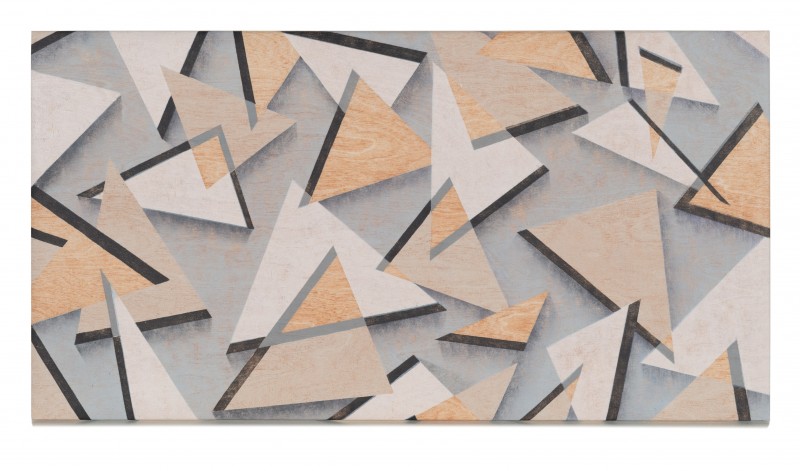
Working an image across 2 individual prints always creates challenges in paper stretch from so much baren work. All the blocks are hand carved in Russian Birch and hand printed on quality Japanese Kozo.
What do you see as the role of Sydney Printmakers for the next 60 years?
I would hope Sydney Printmakers remains a committed group of artists celebrating the dynamics of both traditional print media and new technologies who create a platform for sharing their individual creative talents and also to be challenged as a group to remain effective in the coming years.
How do you see the role of printmaking, in general, contributing to the conversation about contemporary art practice?
I have no doubt that printmaking will continue to be the medium of choice for many contemporary artists. With the success of many international conferences focused on printmaking it is no doubt a popular medium universally.
The greater challenge is to preserve the teaching of traditional practise in our art institutions and for those with the knowledge to be willing to share. We collectively have to continue to preserve what we now have for future generations in our shared knowledge of the print medium.
